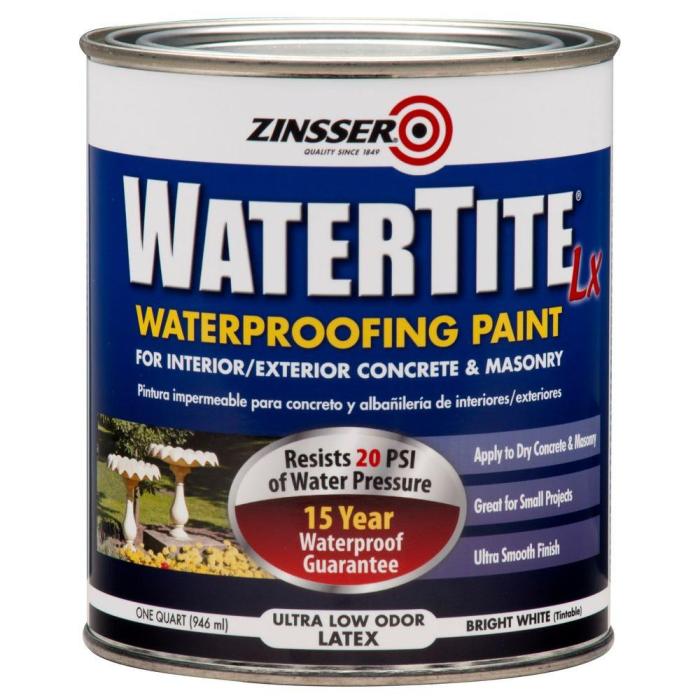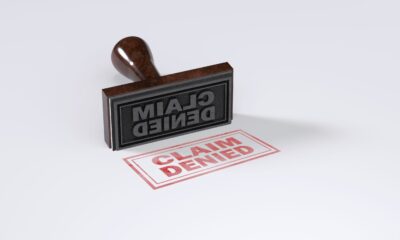General
Exploring Waterproof Exterior Paint Solutions: A Comprehensive Guide

Delve into the world of waterproof exterior paint solutions as we uncover the best types, factors to consider, application techniques, and maintenance tips. This guide is designed to equip you with the knowledge needed to make informed decisions for your painting projects.
Types of Waterproof Exterior Paint Solutions

When it comes to waterproof exterior paint solutions, there are several types available in the market, each with its own unique features and benefits. Let's explore some of the most commonly used options:
Elastomeric Paint
Elastomeric paint is a flexible and durable option that can stretch to cover cracks and gaps in the exterior surface. It provides excellent waterproofing properties and is resistant to mildew and UV rays. This type of paint is ideal for areas with high humidity or extreme weather conditions.
Masonry Paint
Masonry paint is specifically designed for concrete, brick, and other masonry surfaces. It creates a waterproof barrier that protects the underlying surface from moisture and water damage. This type of paint is typically breathable, allowing moisture to escape while preventing water from seeping through.
Acrylic Paint
Acrylic paint is a versatile option that can be used on a variety of exterior surfaces. It has good adhesion properties and provides a durable waterproof coating. Acrylic paint is available in a wide range of colors and finishes, making it a popular choice for many homeowners.
Oil-Based Paint
Oil-based paint is known for its durability and water-resistant properties. It forms a tough, protective layer on the exterior surface, making it ideal for areas that are prone to moisture and harsh weather conditions. However, it is important to note that oil-based paint can take longer to dry and may require more maintenance over time.
Latex Paint
Latex paint is a popular choice for waterproofing exterior surfaces due to its quick drying time and ease of application. It provides good coverage and adhesion, making it suitable for a wide range of substrates. Latex paint is also resistant to fading and cracking, ensuring long-lasting protection for your home.
Factors to Consider When Choosing Waterproof Exterior Paint
When selecting waterproof exterior paint solutions, there are several crucial factors to keep in mind to ensure the longevity and effectiveness of the paint job.Durability:One of the most important factors to consider is the durability of the paint. Look for paints that are specifically formulated to withstand harsh weather conditions, UV rays, and other external factors that can cause paint to deteriorate over time.Weather Resistance:Another key factor to consider is the paint's ability to resist weather damage.
Choose a paint that is designed to withstand rain, snow, humidity, and temperature fluctuations without peeling, cracking, or fading.Application Method:Consider the surface you will be painting and choose a paint that is suitable for that specific material. Different paints are formulated for various surfaces such as wood, concrete, metal, or stucco.
Make sure to follow the manufacturer's guidelines for the correct application method to ensure optimal results.Selecting the Right Paint for Specific Surfaces:It is essential to choose a paint that is appropriate for the surface you are painting. For example, if you are painting wood siding, opt for a paint that is designed for wood and offers protection against moisture and rot.
Similarly, if you are painting a metal surface, choose a paint that prevents rust and corrosion.Importance of Choosing Paint Based on Climate:The climate of the region where the building is located plays a significant role in determining the type of waterproof exterior paint to use.
For areas with high humidity, extreme heat, or frequent rain, opt for paints that offer enhanced moisture resistance and UV protection to ensure the longevity of the paint job.
Application Techniques for Waterproof Exterior Paint
When it comes to applying waterproof exterior paint, the process is crucial in ensuring the longevity and effectiveness of the paint. Here, we will detail the step-by-step process of preparing the surface for painting, share tips on proper application techniques, and discuss the importance of multiple coats and proper drying times.
Surface Preparation
- Clean the surface thoroughly to remove any dirt, dust, or grime that could affect adhesion.
- Repair any cracks or holes in the surface with a suitable filler and allow it to dry completely.
- Sand the surface to create a smooth and even texture for better paint adhesion.
- Prime the surface with a waterproof primer to seal and protect it before applying the paint.
Proper Application Techniques
- Use a high-quality brush, roller, or sprayer to apply the paint evenly and smoothly.
- Apply the paint in thin, even coats to prevent drips and ensure proper coverage.
- Work from the top down to avoid streaks and drips on already painted areas.
- Overlap each stroke slightly to ensure complete coverage and a seamless finish.
Importance of Multiple Coats and Drying Times
- Apply at least two coats of waterproof paint to ensure maximum protection against moisture.
- Allow each coat to dry completely according to the manufacturer's instructions before applying the next coat.
- Proper drying times are essential for the paint to cure and provide a durable, waterproof finish.
- Check the weather conditions before painting to ensure proper drying and curing of the paint.
Maintenance and Longevity of Waterproof Exterior Paint
Proper maintenance is key to ensuring the longevity of waterproof exterior paint. By following guidelines for upkeep and knowing when to reapply or touch up the paint, you can extend its lifespan and effectiveness. Additionally, understanding how weather conditions can impact the durability of waterproof paint solutions is essential for maintaining a well-protected exterior.
Proper Maintenance of Waterproof Exterior Paint
- Regularly inspect the painted surface for signs of wear, cracking, or peeling.
- Clean the surface with a mild detergent and water to remove dirt and debris that can affect the paint's performance.
- Address any damage promptly by sanding, priming, and repainting the affected areas.
- Apply a fresh coat of waterproof paint every few years to maintain protection against moisture and UV exposure.
Reapplication and Touch-up Guidelines
- Consider reapplying waterproof exterior paint every 5-7 years, or sooner if you notice signs of deterioration.
- Touch up areas with minor damage or wear using the same type of paint to ensure uniform protection.
- Follow manufacturer instructions for proper application and drying times to maximize the paint's effectiveness.
Impact of Weather Conditions on Longevity
- Extreme heat can cause paint to fade and deteriorate more quickly, requiring more frequent maintenance.
- Heavy rain and moisture can lead to water damage and mold growth if the paint barrier is compromised.
- Cold temperatures and freezing conditions may affect the adhesion and flexibility of the paint, leading to cracking or peeling.
- Choose a high-quality waterproof paint that is formulated to withstand the specific weather conditions in your area for optimal longevity.
Closure
In conclusion, understanding the nuances of waterproof exterior paint solutions is key to achieving long-lasting and effective results. By considering the types, factors, techniques, and maintenance practices discussed, you can ensure a durable and weather-resistant finish for your surfaces.
Query Resolution
What are the key features of waterproof exterior paint solutions?
Waterproof exterior paint solutions are designed to provide a protective layer that prevents water seepage, offers durability, and enhances the longevity of surfaces.
How do I choose the right waterproof exterior paint for my project?
Consider factors like weather resistance, application method, and surface type when selecting waterproof exterior paint. Consult with experts for personalized recommendations.
What is the recommended maintenance routine for waterproof exterior paint?
Regular cleaning, inspections for damage, and timely touch-ups are essential to maintain the effectiveness and longevity of waterproof exterior paint.

-

 General8 months ago
General8 months agoBest Insurance Lawyers Near Me for Claim Disputes: Your Ultimate Guide to Legal Assistance
-

 General8 months ago
General8 months agoNavigating Insurance Claim Denial Lawyers Near Me
-

 Design8 months ago
Design8 months agoOutdoor Design Essentials for a Holistic Lifestyle: Integrating CRM Automation for Lifestyle eCommerce Brands
-

 General8 months ago
General8 months agoWellness Lifestyle and Outdoor Living Integration Tips: Modern Farmhouse Exterior Ideas for Luxury Lifestyle Homes
-

 General8 months ago
General8 months agoThe Best Business Insurance for Interior Designers: A Comprehensive Guide
-

 General8 months ago
General8 months agoCrafting a Comprehensive Guide to Medical Malpractice and Insurance Settlement Law Firms
-

 General8 months ago
General8 months agoHow Exterior Renovations Affect Your Home Insurance Rates: A Comprehensive Guide
-

 General7 months ago
General7 months agoDigital health trends transforming Asia in 2025: A Glimpse into the Future of Healthcare




